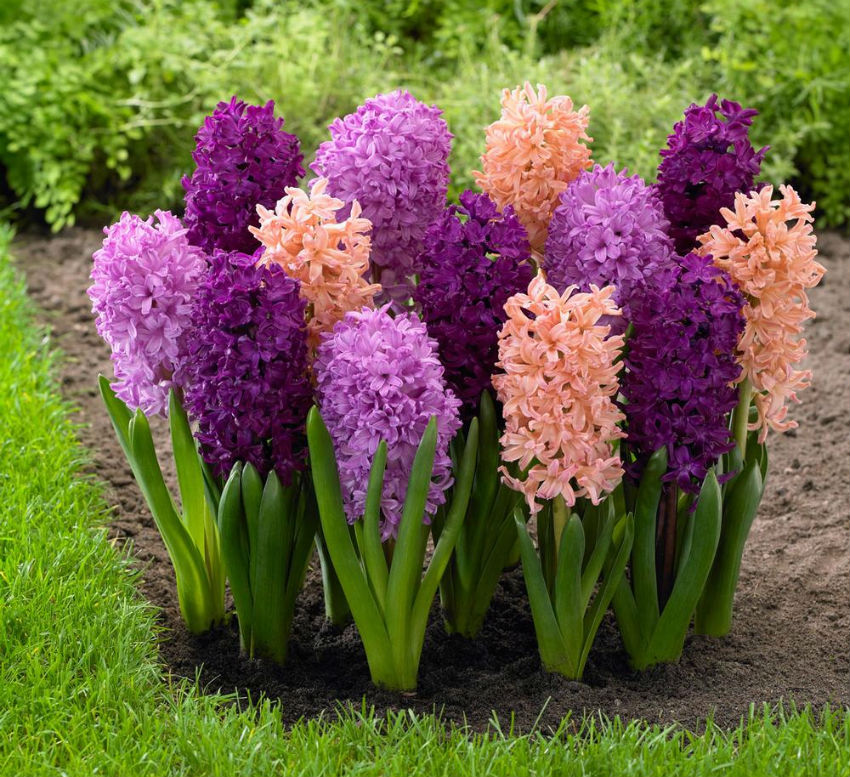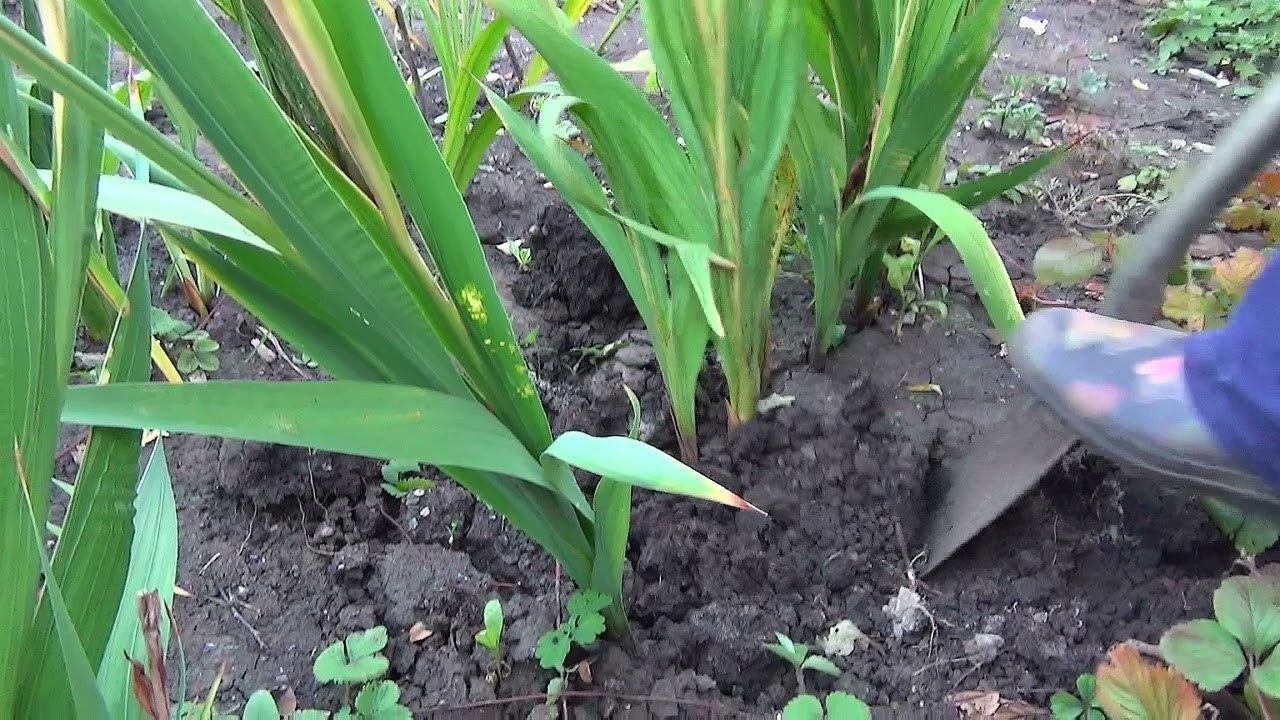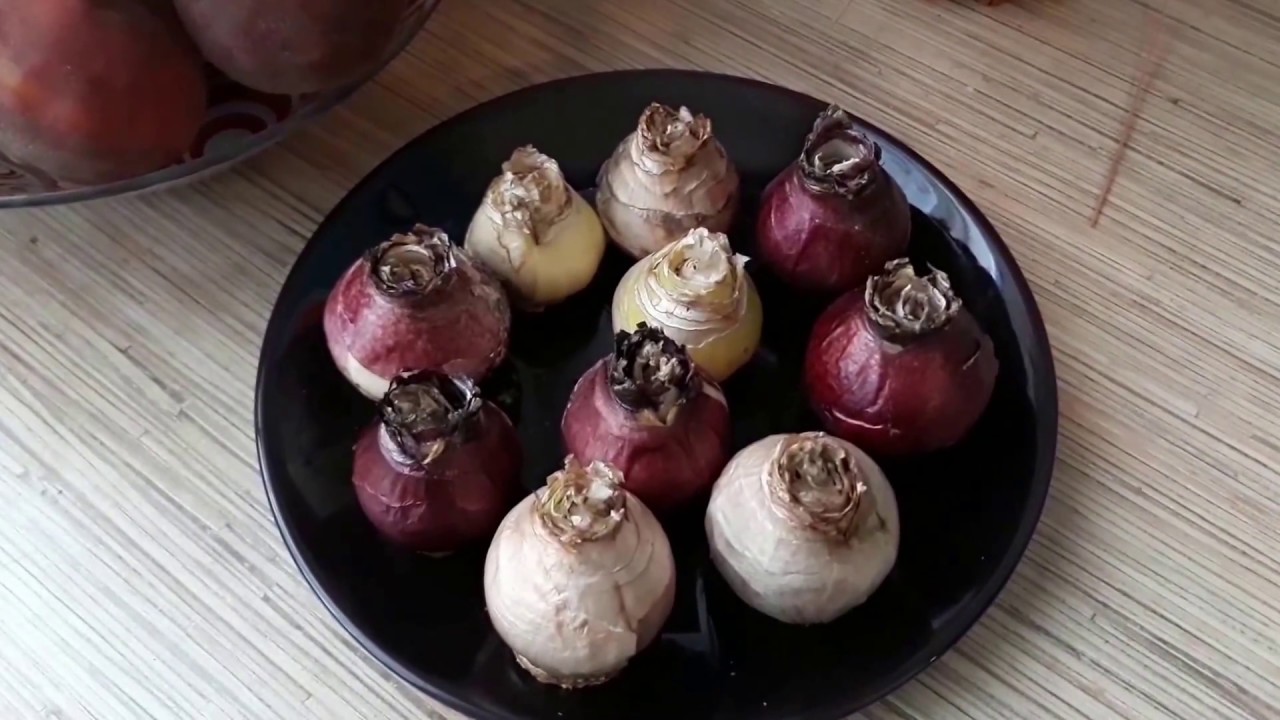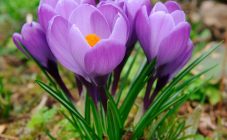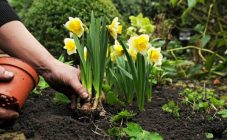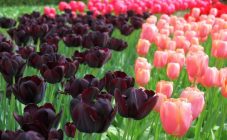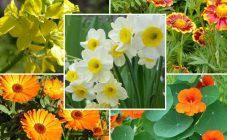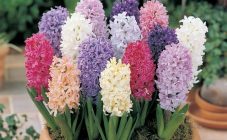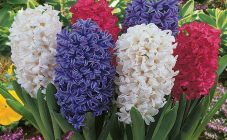Content:
Hyacinths are the first spring flowers that delight the eye with their beauty and aroma. With proper care, you can see them blooming in the garden and in the country from the end of April. As soon as the snow begins to melt, they decorate the still empty flower beds around the house. Once the snow has melted, the mulch layer is removed. Hyacinths bloom until the end of May. In warm and humid weather, new flowers appear on the hyacinth arrow, and the arrow itself continues to grow.
Why dig up
Flowers have faded, perennial hyacinth bulbs. The question arises, why dig them up in the summer, then plant them in the fall? It turns out that the whole thing is in the temperature regime of the soil. In order for a flower bud to be laid in the tuber, thanks to which flowering will occur in spring, a temperature of 26-30 ° C is needed. In soil, this temperature is possible if the summer is hot and the soil warms up to the desired temperature. Therefore, if the ground is not warmed up enough, the hyacinths are dug up and kept warm until the autumn planting in the soil.
Do I need to excavate annually
Each grower has different goals and plans for the cultivation of these flowers in the garden. It all depends on the variety and care of the flowers. Many growers, whose goal is to grow babies, leave nodules in the ground for three to four years to grow larger. Summer watering of areas with plantings of hyacinths is stopped. The area of the plot is mulched.
Nevertheless, it is worth listening to the recommendations of flower growers who were directly involved in the cultivation of hyacinths. For example, the famous Russian florist A. Razin recommends the annual digging of bulbs in late June - early July. With the annual digging of the bulbs and their examination, you can find diseased specimens that are discarded and destroyed. Affected by diseases and pests, they lag behind in growth, have crooked, painful peduncles, turn yellow and wither early.
Selected, without painful signs, specimens of bulbs are treated with phosphorus-containing preparations to protect against diseases and pests. Razin drew the attention of flower growers that not only it is necessary to discard painful specimens, but also disinfect the place where they grew with bleach. It is not recommended to plant bulbous plants on this land.
When to dig up hyacinths
Many novice florists have a question about when to dig up hyacinth bulbs after flowering in the open field. Lovers of hyacinths dig them up in the summer, from the last decade of June to mid-July, in the fall, to the end of October, and in the southern regions until mid-November, the bulbs prepared for planting are re-planted in the soil.
Newbies engaged in breeding hyacinths are interested in the answer to the question of when to dig up hyacinths of rare, unique varieties and frost-resistant? Breeders are advised to dig up the bulbs of such hyacinths in the fall to exclude the possibility of freezing in the harsh months of winter, especially in Siberia and the Urals.Poorly overwintered hyacinth tubers do not give a lush and beautiful flowering. There are many nuances in the cultivation of hyacinths. Therefore, when to dig out the bulbs of hyacinths and plant the grown planting material, florists decide in each case.
How to dig
As soon as hyacinths bloom, an important stage begins in the life of flowers - the growth of their underground part. Experts do not recommend digging the tuber out of the ground immediately after flowering. It is necessary to give the plant an opportunity to restore its strength, to organize sufficient nutrition for the underground part of the flower before the dormant period.
The first thing to do is to cut the arrow off before the seed bolls begin to form, so that nutrition is directed not towards seed ripening, but towards tuber growth. Florists do not recommend removing the deciduous part of the plant. The tuber receives nutrition from the soil, thanks to watering and fertilization, as well as from the leaf in which photosynthesis takes place. Watering should be stopped gradually.
You can spud the bush a little after fertilization. After this procedure, watering stops. The leaves turn yellow and dry naturally within a month. At the end of June, dry leaves are freely separated from the bulbs.
Dig up the hyacinths with a shovel, since the tubers are deep in the ground. The dug tubers are washed in water and dipped in a 4% solution of karbofos for half an hour. After this procedure, the bulbs are dried for 5-7 days in a ventilated place, not in the sun. The air temperature should be 20-22 ° С.
How to store bulbs
Dried tubers are peeled from onion skins. If babies are found under the husk, they are carefully separated from the mother's bulbs. With further storage of hyacinths after digging (July-August), the temperature regime (25-27 ° C) and mandatory ventilation of the room should be observed. This can be a barn or a shaded area on the veranda. In the first month of autumn, the bulbs should be kept in a cooler room with a temperature of + 18 ° C. Considering that the planting of the bulbs is planned for the first half of October, two weeks before that, they must go through a stage of natural cooling, that is, be in a room with a temperature of + 10 ° C (this may be a cold basement).
Beginners are also interested in getting an answer on how to store a hyacinth bulb of rare and not frost-resistant varieties in northern regions with frosty winters. The dug out hyacinths are sorted and disinfected, and then sent to storage.
You should choose the best option in which the bulbs are securely stored until the next summer season. If it so happened that there are non-frost-resistant specimens of hyacinths dug out in the summer at their summer cottage or purchased in flower shops during the discount season, but the weather conditions for planting them in the soil are not suitable, you need to decide the issue of their storage. On the shopping bags, the landing date is indicated - until November 20. This applies to the southern regions, where weather conditions make it possible to plant the purchased planting material, but not in any way the northern regions, where snowfall is already possible. Therefore, you need to try to save the planting material until the next summer season.
If summer residents have a basement or cellar, this is ideal for winter storage. The main conditions for the good preservation of the bulbs are low temperature and high humidity, so that the hyacinth tubers do not dry out.
There are two storage options in the basement or cellar:
- Dry storage. Put the bulbs in a basket, cardboard or wooden box and sprinkle with dry peat or dry sawdust. At a low above zero temperature, the tubers will lie before planting. Under natural conditions at this temperature, a flower bud is formed in them.It is necessary to plant as early as possible, as soon as the soil allows, warmed up by the sun or specially covered with a film for quick warming up. Specimens kept dry will bloom later than those planted in the fall in the ground. Flowering can be expected in late May and early June. This is because they need to take root, gain strength and germinate. Only then will the hyacinths bloom.
- Wet storage. In this case, both storage and rooting of the bulbs are ensured. They are planted in plastic trays in wet sawdust or wet peat. This contributes to the appearance of roots in the bulbs. In the spring, as soon as weather conditions permit, transplantation into the soil is carried out. It is necessary to plant bulbs with roots carefully so as not to damage them. These hyacinths will bloom earlier than when stored dry.
If there is no cellar or basement, it is good to store the bulbs in the refrigerator, where vegetables and fruits are stored, but you need to wrap each onion in thick paper to prevent it from drying out, and place the wrapped bulbs in a canvas bag. In this case, the bulbs will not sprout, but will undergo a cooling period that the flower needs in order for it to bloom. In the spring, planting material is planted when weather conditions allow it.
You can make hyacinth forcing at home. This will require plastic trays, pots or boxes, 12-15 cm deep. Any garden soil that is sold in horticultural centers is poured at the bottom. On top of the soil, the bulbs are laid out, tightly to each other, and covered with soil so that the tip of the bulb is on the surface. Before planting, it is recommended to water the soil with a solution of potassium permanganate, disinfect the bulbs themselves with the preparation "Maxim".
Thus, the article provides recommendations from experienced gardeners and breeders, as well as Dutch flower growers, who will help lovers of hyacinths grow beautiful flowers in their summer cottages and gardens.
